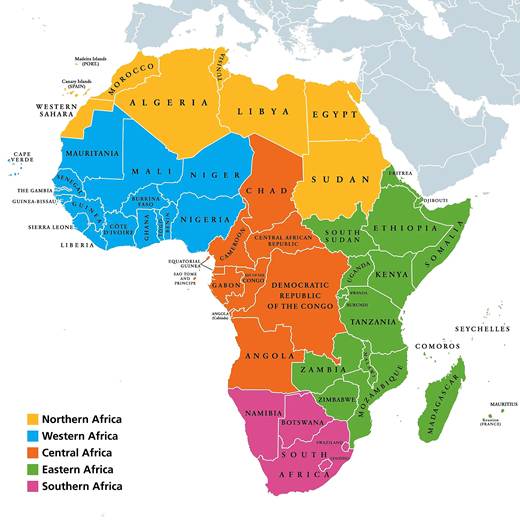Published on Nov 18, 2025
Daily Editorials Analysis
Editorials/Opinions Analysis For UPSC 18 November 2025

Content
- The lower judiciary — litigation, pendency, stagnation
- India–Africa Relations: Ten Years After IAFS-III
The lower judiciary — litigation, pendency, stagnation
Why in News?
- Constitution Bench led by the CJI linked massive pendency (4.69 crore cases in district courts) to stagnation in subordinate judiciary.
- Another SC Bench flagged poor basic knowledge among Delhi judges and ordered training.
- Debate revived on structural reforms, procedural simplification, and judicial capacity-building.
Relevance
- GS-II (Polity & Governance): Judicial reforms, pendency, subordinate courts, Article 233–235, access to justice.
- GS-II (Welfare & Governance): Impact of procedural delays on citizens, rule of law.
- GS-II (Judiciary): Capacity-building, training, structural reforms, case management.
Practice Questions
- Discuss the structural and procedural causes of pendency in India’s subordinate judiciary. Suggest reforms to improve trial court efficiency.(250 Words)

Basics: Structure of Subordinate Judiciary
- Three tiers: District Judges → Senior Civil Judges → Civil Judges (Junior Division).
- Governance: Appointments and service conditions under Art. 233–235, controlled by High Courts.
- Workload: Handle 85–90% of India’s total caseload; first point of citizen–justice interface.
- Pendency drivers: Delays in summons, adjournments, procedural complexity, understaffing, lack of training.
Core Problem 1: Ministerial Work Consumes Judicial Time
- Subordinate judges forced to:
- Call cases for appearance
- Issue/reissue summons
- Receive vakalatnamas, written statements
- Morning session (10:30 AM–12 PM) consumed by clerical duties → little time left for hearing matters on merits.
- Quality judicial hours lost daily → slows trials and judgments.
Proposed Reform
- Appoint a ministerial judicial officer (lowest rank) per district:
- Handles clerical/administrative tasks full day
- Records ex-parte evidence, issues summons, receives filings
- Prepares next-day cause list for each court; publish online
- Actual courts start trial work at 10:30 AM → improves output and judgments.
Core Problem 2: Declining Quality of Subordinate Judges
- Earlier: District munsifs/magistrates selected from lawyers with 10+ years of mentorship & practice.
- Now: Fresh graduates with no court experience → struggle with drafting orders, managing courtroom.
- SC noted “lack of basic knowledge” → ordered mandatory training for Delhi judges.
Proposed Reform
- Mandatory few-month training at High Court Benches:
- Observe hearings, order-writing, argument structure
- Learn judgment reading & case management culture
- Raises competence, reduces poor orders, cuts unnecessary appeals.
Core Problem 3: Statutory Provisions Increasing, Not Reducing, Pendency
(a) Commercial Courts Act – Section 12A (Pre-suit Mediation)
- Mandatory mediation before filing commercial suits (Patil Automation, 2022).
- Business disputes already involve pre-litigation notice → mandatory mediation adds delay.
- Suit filing gets blocked → increases pendency.
(b) Marriage Laws – 6-Month Cooling-off
- Couples wanting quick mutual consent divorce are forced to wait, unless court waives period.
- Many courts don’t waive → false declarations about “one-year separation” → more litigation.
(c) New Rent Act Confusion
- Conflicting rulings on whether rent court has jurisdiction without registered lease.
- Same facts → civil court/commercial court jurisdiction, but not rent court.
- Result: Forum confusion and fresh filings → pendency rises.
Core Problem 4: Archaic & Complex Procedural Law (CPC)
Key flaws
- Preliminary & final decree system in partition suits → doubles litigation.
- Execution proceedings (Order XXI – 106 rules) highly technical → tools for delaying decree implementation.
- Order VIII Rule 1 (90-day limit on written statement):
- Rigid for title suits; does not speed disposal.
- Leads to poorly drafted pleadings, not faster justice.
Needed Reforms
- Merge preliminary–final decrees; make final decree automatic.
- Simplify execution proceedings; introduce fast-track enforcement.
- Introduce asset disclosure at framing of issues → speeds recovery.
- Modernise procedural law designed for 1908 litigation realities.
Core Problem 5: Higher Judiciary’s Role
- Pendency not just a trial court issue—appellate delays also cause stagnation.
- Need:
- Faster disposal of appeals
- Stricter adjournment norms
- Monitoring of High Court case management
Way Forward
- Create ministerial courts for summons/filings.
- Recruit experienced lawyers as trial judges (reverse current trend).
- Mandatory High Court bench exposure for new judges.
- Overhaul procedural law (CPC, Rent Act, Commercial Courts Act).
- Fast-track execution of decrees & arbitration awards.
- Digital cause-lists, e-summons, video evidence recording.
- Increase judge-to-population ratio (India: ~21 judges per million; global avg: 50+).
- Fill vacancies quickly; periodic performance reviews.
India–Africa Relations: Ten Years After IAFS-III
Why is it in News?
- A decade has passed since India hosted IAFS-III in 2015, the last India–Africa Forum Summit attended by all 54 African states.
- India has since expanded missions, investments, and diplomatic engagement, but the IAFS mechanism has not reconvened.
- Strategic review needed as Africa gains demographic, economic, and geopolitical weight; India–Africa ties entering new competitive and opportunity-rich phase.
Relevance
- GS-II (International Relations): India–Africa partnership, South–South cooperation, diplomacy.
- GS-II (Global Governance): AU in G20, India’s role in multilateral forums.
- GS-III (Economy): Trade, investments, digital corridor, AfCFTA.
- GS-III (Security): Maritime cooperation, Indo-Pacific, anti-piracy.
Practice Questions
- IAFS has not met since 2015. Critically analyse the implications for India’s long-term Africa strategy.(250 Words)

Basics: India–Africa Forum Summit (IAFS)
- Institutional platform for structured India–Africa partnership.
- Held in 2008 (Delhi), 2011 (Addis Ababa), 2015 (Delhi).
- Themes: capacity building, grants, Lines of Credit (LoCs), training, education, agriculture, energy, digital connectivity.
Status of India–Africa Engagement Since 2015
Diplomatic Expansion
- 17 new Indian missions opened across Africa.
- India supports African Union’s global role → key in securing AU’s full G20 membership.
Economic Links
- Trade crossed $100 bn.
- Cumulative investments: $75 bn, placing India among Africa’s top five investors.
- Shift from resource-led projects to co-creation: ports, grids, vaccines, digital tools.
Strategic & Maritime Cooperation
- 2025: First Africa–India Key Maritime Engagement (AIKEYME) with nine African navies.
- Focus on Indo-Pacific, anti-piracy, maritime domain awareness.
Development Partnerships
- EXIM Bank extended $40 mn line of credit to ECOWAS Bank → signalling support for African-led development.
- Knowledge partnerships strengthened (ITEC, ICCR, Pan-African e-Network).
Education & People-to-People
- IIT Madras Zanzibar campus → first offshore IIT.
- 40,000 Africans trained in India in the last decade.
- African students, athletes, researchers increasingly visible in India → reciprocal people-to-people linkages.
Opportunities: The Growth Corridor
- By 2050: 1 in 4 humans will be African, while India becomes the 3rd largest economy.
- Complementary strengths:
- Africa’s demography + India’s technology
- Africa’s markets + India’s industry
- Shared colonial history + Global South leadership
- AfCFTA is creating a single African market → opportunities for Indian manufacturing and digital finance.
Challenges
- India lags behind China in trade volume and infrastructure presence.
- Indian firms face:
- Small balance sheets
- Slow execution
- Policy uncertainty
- Bureaucratic delays
- Africa’s innovation hubs (Kigali, Nairobi, Lagos) face intense global competition → India must move faster.
Sectoral Priorities for the Next Decade
1. Co-invest in Future Sectors
- Green hydrogen
- Electric mobility
- Digital public infrastructure
- Vaccine & pharma manufacturing
- Agritech & food processing
2. Build an India–Africa Digital Corridor
- Combine India Stack/UPI with Africa’s mobile-first digital ecosystems.
- Joint platforms for:
- Tele-education
- Tele-health
- Payments
- Government services
3. Strengthen Institutional Mechanisms
- Revive IAFS-IV to reset long-term agenda.
- Annual ministerial consultations, thematic working groups (health, digital, energy).
India’s Competitive Advantage
- Historical goodwill; no colonial baggage.
- Affordable technology and capacity-building model.
- Strong diaspora links and educational exchanges.
- Soft power: Bollywood, cricket, yoga, healthcare.
Core Strategic Logic
- Africa’s rise is inevitable; India’s rise is ongoing → convergence creates a South–South Growth Corridor.
- India–Africa partnership must shift from donor–recipient to co-creation and co-investment.
- Delivery, not mere announcements, will define the next phase.
